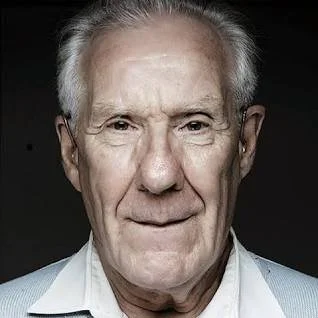Prelude to This Two-Part Post
We could understand the entire theory of trauma in Beyond the Pleasure Principle not simply as the explanation of trauma from the distance of theoretical speculation but as the passage of the story of the child in a theoretical act of transformation. For what is the story of the mind’s attempt to master the event retrospectively if not the story of a failed return: the attempt, and failure, of the mind to return to the moment of the event? The theory of repetition compulsion as the unexpected encounter with an event that the mind misses and then repeatedly attempts to grasp is the story of a failure of the mind to return to an experience it has never quite grasped, the repetition or an originary departure from the moment that constitutes the very experience of trauma. And this story appears again as the beginning of life in the death drive, as life’s attempt to return to inanimate matter that ultimately fails and departs into a human history. Freud’s own theory, then, does not simply describe the death drive and its enigmatic move to the drive for life but enacts this drive for life as the very language of the child that encounters, and attempts [in the “fort-da” (”gone-returned”) game, as Freud dubs it] to grasp, the catastrophes of a traumatic history.
— Cathy Caruth, “Parting Words: Trauma, Silence, and Survival,”
In reading those words from Cathy Caruth’s opening chapter of her book Literature and the Ashes of History (Baltimore, MD: Johns Hopkins University Press, 2013) I myself experienced the return of a call of thought that I had not managed to grasp with any clarity before that moment. This two-part post will eventually explain that experience, at least to those given ears to hear.
My purpose in writing this two-part post is the same in spirit as the purpose Adam Phillips attributes to psychoanalysts in general and Freud in particular in the following passage from Becoming Freud: The Making of a Psychoanalyst (New Haven and London: Yale University Press, 2014, pp. 7-8):
The psychoanalyst is a historian who shows us that our histories are also the way we conceal the past from ourselves[,] the way we both acknowledge it and disavow it at the same time (to disavow it is, one way or another, to simplify it; to acknowledge it is to allow complication). After “the great Darwin,” as Freud called him, another of Freud’s heroes, we are creatures of an appetite to survive and reproduce; and because we are desiring creatures in an uncomfortable world we are, like all animals, endangered by our desire and therefore self-protective. But unlike other animals, who because they have no language have no cultural history, we also feel endangered by our histories. There is nothing we want to protect ourselves more from, in Freud’s view, than our personal and family histories. For many people the past had become a phobic object, concealed in sentimental nostalgia and myths of race and national history. Through psychoanalysis — which was clearly a response to these increasingly insistent contemporary questions — Freud tried to work out the ways in which we are unduly self-protective; the senses in which modern people suffer from their self-protectiveness.
* * *
The phrase “the trauma of humanity,” which makes up the second half of my title for this two-part blog post, can be understood in two different ways, depending on how one takes the preposition of. One can take “of” in the phrase at issue to mean “happening to or befalling” but one can also take it to mean “which is.”
Taken in the first way, the phrase “the trauma of humanity” would mean the trauma which befalls humanity, within which phenomenon would be included such symptomatic out-breaks of what humanity has repressed as last century’s two World Wars or this century’s current war in Gaza. That is how I will take my title “The Repressed Returns in the Trauma of Humanity’ in “Part One,” today’s first part of my two-part post.
Thus, in today’s post following this three-part “Prologue” (such repetition being appropriate, given the content of the unified whole of both parts plus this prologue) I will take that phrase to mean the symptomatic return belonging to the repressed trauma that strikes collective humanity as such. That symptomatic return has been striking humanity over the ages, occurring in such events the 30-Years War, to add a third example to the two I’ve already given — of the World Wars and the war in Gaza. At issue is the trauma which repeatedly besets humanity, in all such symptomatic recurrences.
Battle of the Somme, which took place July-November 1916, during World War I
* * *
Then in “Part Two” of this two-part post — the part I will put up in two weeks, on November 11 of this year — I will address, not the trauma that recurrently besets humanity, but the trauma that humanity itself is.
Toward the close of that second part of this two-part post, I will consider how the two, humanity traumatized, and humanity traumatizing fit together in one whole.
* * *
Part One: Humanity Traumatized
Trauma compulsively repeats itself, as Freud taught. It continues compulsively to repeat itself until it is finally faced as the trauma it is, that is, until the repression that is the flip-side of the coin of trauma, is brought to a close, and the traumatic event is at last acknowledged as the trauma it is.
Indeed, to bring the one traumatized finally to face and acknowledge that one’s trauma is the very thing at which such repetition aims. As I wrote myself at one point in “Civilization, Empire, and the Holy,” a short essay of mine published a few years ago in After Empire, the 2020 edition of A Beautiful Resistance, the annual journal of Gods & Radicals Press (Salem, Oregon: p. 103), “the last compulsive repetition of a trauma is the one that finally brings the whole traumatic series of repetitions to its goal, so that at last the traumatized can cease compulsively avoiding the trauma, and, in finally facing it, recover health and wholeness (to be redundant, since those two words, heard to their roots, say the same).”
Such repetitions of trauma constitute, as it were, “after-shocks” of the original shock of trauma, as I put the matter in my own 2020 book The Irrelevance of Power (available in the “Bookstore” at the top of this blog-site). Those after-shocks of repetition will continue to occur until the one traumatized at last stops repressing the memory of being shocked in the first place by the original traumatic occurrence.
In short, trauma always returns.
Atomic bombing of Hiroshima and Nagasaki by the United States at the end of World War II in August 1944
* * *
Whom the gods would destroy they first make mad.
--Henry Wadsworth Longfellow
Perhaps the gods have long been out to destroy us. Perhaps it is for that purpose that they sent us empire, in order to drive us mad first.
Seen in that light, empire, along with the civilization to which it belongs, appears as our collective historical insanity—humanity gone mad. In turn, seen in the same light, that madness itself is sent in order to set us up for ultimate destruction. It is sent to lead us eventually to the Apocalypse, in at least one meaning of that term, according to which it signifies a world- and time-ending catastrophe.
Other lights than Longfellow’s can be cast, however.
Seen in one such alternative light, empire still appears as madness, but the ultimate purpose of that madness is no longer to prepare us for destruction. Its ultimate purpose is, instead, to bring us to salvation.
Seen in that different light, empire still appears as our collective historical insanity. Yet now it appears as an insanity, a madness, sent us—or, rather, into which we have been sent—in order to bring us eventually, at the end of a long an arduous journey along a meandering path that often ends in thickets and requires us to retrace our steps, back home again to true and final sanity. Perhaps our insanity is ultimately sent us by the gods so that we can at last, after such a long journey, come back again to the very same place where we began, only to know it now for the very first time (to adapt a line from T. S. Eliot).
That is how I begin my essay “Civilization, Empire, and the Holy,” already cited above. In the above passage I am addressing the trauma upon collective humanity that has kept on compulsively repeating itself for millennia in the forms of war, conquest, genocide, racism, and all the other disasters that have struck “the human race,” to borrow the English translation of the French title Robert Antelme gave his account of being arrested by the Gestapo and sent to Dachau — a book still very much worth reading with care, by anyone who cares at all about anything at all worth caring about.
In the above passage from my own essay I am suggesting that the first bead, as it were, on the long string of beads making up by all the long and still ongoing history of repetitions in the form of wars and the rest — I am suggesting that the bead that begins that so far unending string of beads is the emergence of “civilization” itself, that very form of human gathering that took place in what are called cities, a word that derives from the Latin civitas, to give that Latin term its nominative form.
* * *
All of that certainly is worth serious thought, at any rate.
A child caught in the Gaza Strip War in October 1923







